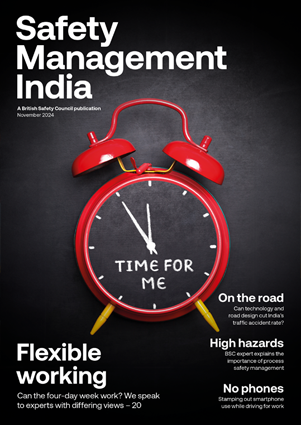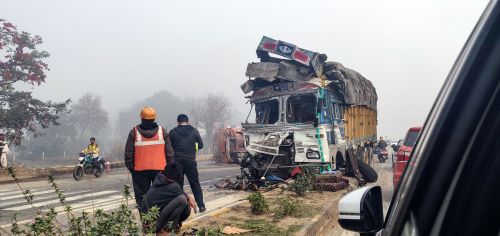The golden thread topic has no doubt featured many times before. With it being summer 2023, the registration of higher-risk buildings is in full swing, and the policy on the golden thread of information is being finalised with secondary legislation enshrining it expected in various waves soon.
Features
Golden threads – delivering safety in buildings and beyond
But why is the golden thread concept so important? And why are we at the Institute of Workplace and Facilities Management (IWFM) putting so much effort into influencing policymakers and collaborating across the built environment to get it right?
The golden thread is a key part of the new, more stringent building regime introduced by the Building Safety Act 2022. Having a golden thread of accessible and transferable information or data will ensure that the right people have the right information, at the right time, to manage the building and its fire and structural risks.
While we are working on what ‘good’ looks like for building safety, the prize will not just deliver on building safety outcomes, but also many others, such as the UN Sustainable Development Goals, which cover all the main strategic challenges FMs and their organisations – and anyone with a portfolio – need to engage in.
 Sofie Hooper: "The golden thread is a key part of the new, more stringent building regime introduced by the Building Safety Act."
Sofie Hooper: "The golden thread is a key part of the new, more stringent building regime introduced by the Building Safety Act."
Information management
We’re trying to square the circle on what the golden thread in building safety needs to be able to do. At its core, it’s about information management: making sure you have accurate information at the right time to make the best possible decisions, and the ability to share this information with people in a platform agnostic way.
A few principles need to be in place: you need to have the right information structure in place and the ability to exchange and use information between supply chain partners and deliver it to asset owners. Such information exchanges are important for a variety of business outcomes. But because asset owners, the principal accountable persons, have a specific responsibility for collecting and at times sharing building safety information, this policy area is a good place to start.
After all, the government is explicitly requiring delivery of good information management practice through building safety legislation. And if we’re still not convinced about what delivering valuable data means, KPMG estimated that every £1 invested in data delivers a return of £6.
IWFM is working on tools for members to deliver against both building safety requirements and broader outcomes. To enable this, we’re getting the wider structures and policies right so they can apply to any outcome. We have contributed towards the work of the Government Industry Interoperability Group, who has only just launched its Interoperability Code of Practice for Technologies in the Built and Managed Environment.
 A golden thread of information will ensure that the right people have the right information, at the right time, to manage the building and its fire and structural risks. Photograph: iStock
A golden thread of information will ensure that the right people have the right information, at the right time, to manage the building and its fire and structural risks. Photograph: iStock
When looking at the key building blocks needed to go into any golden thread, you need to know what your assets are and their condition. That’s why at IWFM we will be looking to collaborate on updating our asset management guidance: it’s a key building block for a robust golden thread. Advice on how to go on a digital maturity journey will be covered by another guidance piece due out very soon, with a multitude of wider tools planned for the coming months.
Cross-sector collaborative work
But circling back to the very specific golden thread requirements arising from the Building Safety Act 2022, pivotal cross-sector collaborative work is being carried out by the Building Safety Alliance and its golden thread special interest group (SIG 3). This SIG 3, chaired by IWFM’s own Technology SIG Chair, will deliver a minimum viable solution so that even those with minimal resources and capability can meet regulatory requirements. This will be enhanced by a roadmap so people can build on the structure towards a fully digital, interoperable data and information management solution.
 Pivotal cross-sector collaborative work is being carried out by the Building Safety Alliance and its golden thread special interest group (SIG 3). Photograph: iStock
Pivotal cross-sector collaborative work is being carried out by the Building Safety Alliance and its golden thread special interest group (SIG 3). Photograph: iStock
SIG 3’s aim is to deliver on the 2023 needs while future proofing them for a long-term vision of a fully integrated and digitally enabled built environment of the 2050 world. They are doing this by working towards the provision of open-source solid foundations in three key areas:
- Information model/management requirements and alignment – the golden thread list: Developing an information and management model that can be used by industry to identify and analyse the golden thread information they require to manage their buildings throughout the building safety lifecycle. It will also form the basis of a common language so accountable persons can work with their software companies to develop it into a digitally enabled tool that allows them to share data via a commonly accepted code/language. This Microsoft Excel-based tool will align seamlessly with existing standards and classifications, ensuring efficient data integration and knowledge sharing while working with key organisations already leading the industry in these capacities.
- Personas: Understanding the impact of policy changes on different groups is vital. SIG 3 is actively creating an inclusive and well-defined model of individuals and communities affected by the Building Safety Act, and specifically its information management requirements, with a view to providing targeted support. This comprehensive approach allows us to assess the implications on each group and determine their specific roles and responsibilities during the lifecycle. Our aim is to facilitate a smooth and just transition for all.
- Impact assessment and support: To effectively address the impact on stakeholders identified in the previous areas, SIG 3 is looking to qualify the broad impacts and potential support mechanisms. By understanding the specific needs of individuals, businesses, and the sector, we can ensure timely and relevant assistance.
This iterative process will provide a starting point that can be further expanded into a unifying and long-term roadmap, leveraging the golden thread work as a catalyst for the sector’s growth and success.
We call on anyone else out there looking at providing industry-wide building safety information management standards to come and collaborate with SIG 3. Only by collaborating and working towards consensus and uniformity in standards can we provide an industry uplift in digitisation for both small and big players, and everything in between.
Get in touch by visiting: buildingsafetyalliance.org.uk
Sofie Hooper is head of policy and research at IWFM (Institute of Workplace and Facilities Management)


FEATURES
Why changes to recycling legislation in England are an opportunity, not a burden
By on 12 November 2024

Road safety in India: could better road safety, vehicle technology and enforcement make driving for work safer?
By Orchie Bandyopadhyay on 10 November 2024
India has a poor road safety record, and research shows that commercial vehicles are a major contributor to the problem, with trucks estimated to be the single largest vehicle type involved in impacts leading to fatalities. We look at solutions that could make driving for work and the roads in general safer – from in-vehicle technology that warns truck drivers about unsafe behaviour to improving the design features of major highways.

